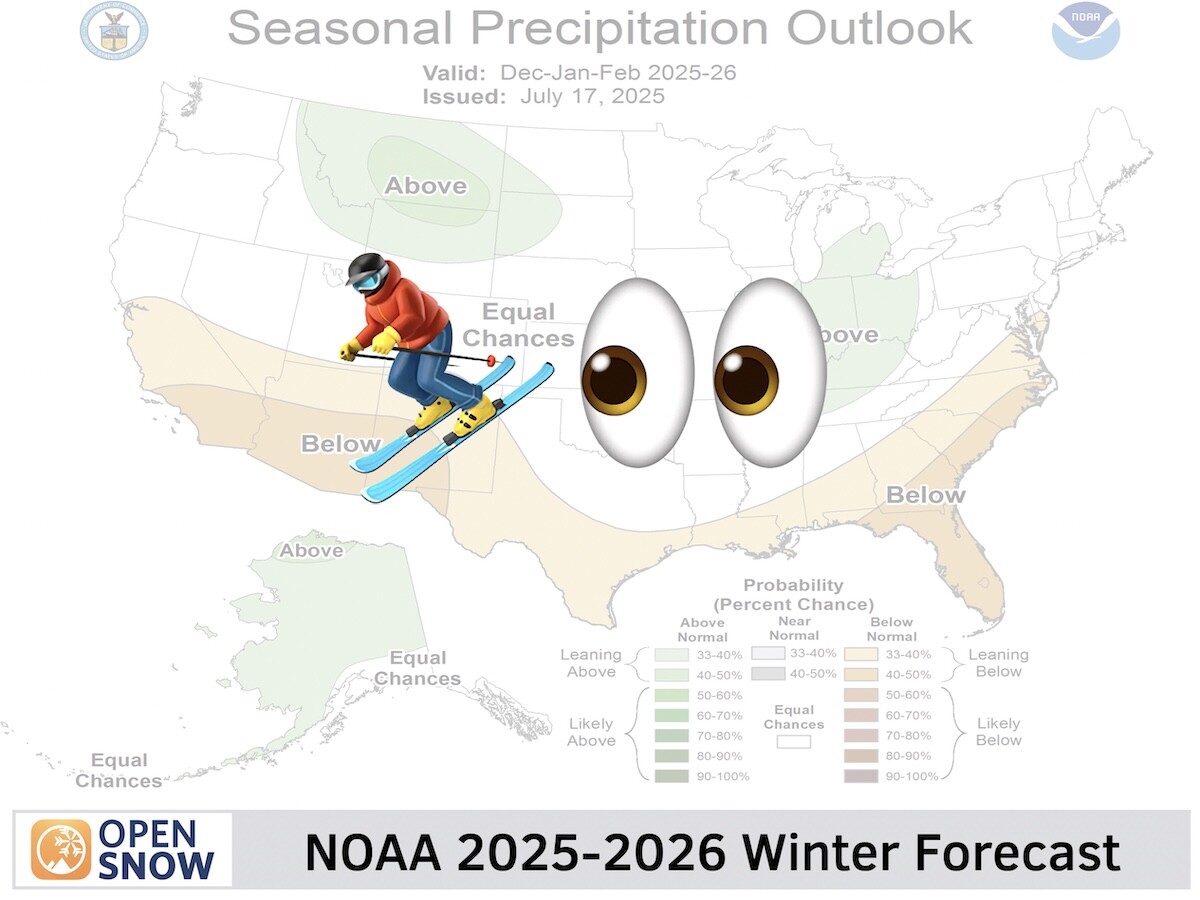Western US Daily Snow

By Alan Smith, Meteorologist Posted 1 year ago July 15, 2024
Thunderstorm Activity Picking Up Across the Rockies
Summary
Monsoonal moisture has returned to the Western U.S. and the Southern & Central Rockies are entering a cycle of near-daily thunderstorms. Colorado will be the most favored for storms early this week. Most areas will also see cooler temps compared to last week, though the Interior NW will remain very hot. Smoke from fires will impact parts of the Interior West, especially Eastern Oregon & Idaho.
Short Term Forecast
Big Picture Weather Pattern:
Monsoonal moisture has increased across the Western U.S. over the past few days, and we will see a gradual eastern progression of moisture early this week – meaning a decrease in storms for the Sierra, while the Colorado Rockies will see an uptick in storms.
A backdoor cold front will also slide into Wyoming and Colorado from the northeast, bringing heat relief and an uptick in low-level moisture from the plains. This will contribute to more numerous thunderstorms for the Front Range in Colorado, as well as the eastern ranges in Wyoming.

5-Day Precipitation Forecast:
Mountain ranges along and east of the Divide in Wyoming, Colorado, and New Mexico will see the heaviest rainfall this week, while areas west of the Divide will see scattered thunderstorms throughout the week with locally heavy downpours.

5-Day Temperature Departure from Average:
The heat wave that has recently impacted the West will relax some this week. Low elevation areas will still be hot with temperatures continuing to run above average, but we won't see the same kind of extreme values that we saw last week.
Central and Eastern Colorado will see the most noticeable cooling trend as a cold front arrives on Tuesday.
The one exception to the cooling trend will be the Interior Northwest, Far Northern Rockies, and Canada where a significant heat wave is expected this week with well above average temperatures. This region will also see little to no moisture.

Fire and Smoke Outlook:
The largest and most active wildfires are currently burning in California, Southern Utah, Oregon, Washington, and Montana. Moderate to heavy smoke can be expected across Eastern Oregon and Southern Idaho on Monday, with a possible progression southward into Northern Utah on Tuesday, including the Salt Lake area.
Smoke Forecast for Monday PM:

View → High-Res Smoke (Surface) Forecast
Forecast for Mon (Jul 15) to Tue (Jul 16):
The High Sierra and Southern California mountains will see isolated thunderstorms on Monday followed by a drying trend on Tuesday as moisture shifts east.
The Southwest and Southern/Central Rockies will see a fairly run-of-the-mill scattered thunderstorm pattern both days with locally heavy rain, while the Front Range will see its big uptick on Tuesday. Isolated flash flooding will be possible under heavy storms, mainly in slot canyons, dry washes, and burn scars.
Across the Interior Northwest (Oregon and Southern Washington), isolated dry thunderstorms are possible which will keep fire danger elevated.

Let's take a look at state and regional rainfall forecasts for Monday through Tuesday to get an idea of which areas will be most favored for thunderstorms. Keep in mind that locally higher rainfall totals could occur under heavy thunderstorms compared to what this model is projecting.
Colorado:
Storms are expected for mountainous terrain statewide, but the Front Range will be most favored, especially on Tuesday.

Here is our hourly precipitation and lightning forecast for the summit of Longs Peak on Tuesday.

Utah:
Thunderstorm activity will favor the Uintas but scattered terrain-driven thunderstorms are possible statewide, and isolated flash flooding couldn't be ruled out in canyon country.


Arizona:
Thunderstorm activity will largely be terrain-based, favoring the Mogollon Rim and the Flagstaff region. While widespread storms are not anticipated, strong storms could produce locally heavy rain.

New Mexico:
The Sangre de Christo Range in Northern New Mexico will be the most favored early this week with only isolated storms for Southern New Mexico. Thunderstorm activity will increase statewide later this week.

Northern Rockies:
Wyoming will be most favored for thunderstorms early this week, including the Teton Range, Wind River Range, and Bighorn Range. Southern Idaho and Southern Montana will only see isolated storms.

Forecast for Wed (Jul 17) to Thu (Jul 18):
Moisture levels will remain high along and east of the Divide in Colorado, resulting in a good chance of thunderstorms with locally heavy rain. This activity will also spread southward into New Mexico where an uptick in thunderstorms is expected.
West of the Divide, a run-of-the-mill monsoon pattern will continue with scattered afternoon thunderstorms across Arizona, Utah, and Wyoming that could produce locally heavy downpours. Isolated thunderstorms can also be expected in Nevada, Idaho, and Montana.
The Interior Northwest (Washington and Northern Oregon) could see some isolated dry thunderstorms with fire danger remaining high.

Forecast for Fri (Jul 19) to Sat (Jul 20):
A similar pattern is expected with thunderstorms favoring Colorado and New Mexico, especially near the Continental Divide. West of the Divide, daily rounds of scattered thunderstorms can be expected once again, and isolated thunderstorm activity could also return to the Sierra.

Extended Forecast
Outlook for Sun (Jul 21) to Thu (Jul 25):
A tall ridge of high pressure will remain over the Western U.S. with well above average temperature anomalies expected across the Interior Northwest and Northern Rockies where the airmass will be driest. The prolonged heat wave in this region will continue to result in increasing fire danger, with an uptick in fires and smoke possible.
Models are currently at odds on where exactly the high pressure center will set up, which will influence monsoonal moisture transport. However, western areas of the monsoon region look to be most favored at this time with perhaps less moisture for Northern and Central Colorado (isolated storms would still be possible most days).

Thanks so much for reading! Next update on Wednesday (July 17).
Alan Smith
About Our Forecaster




